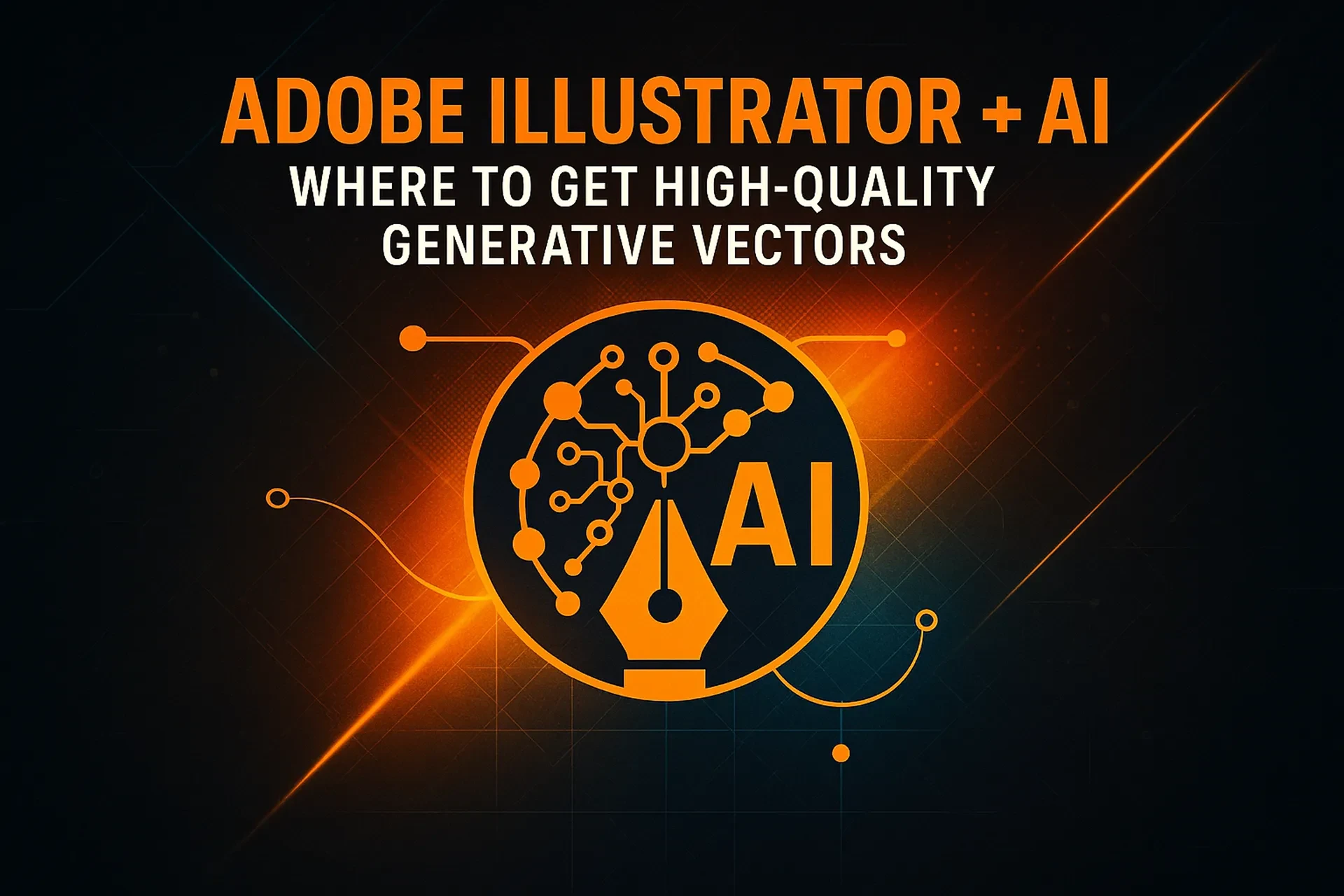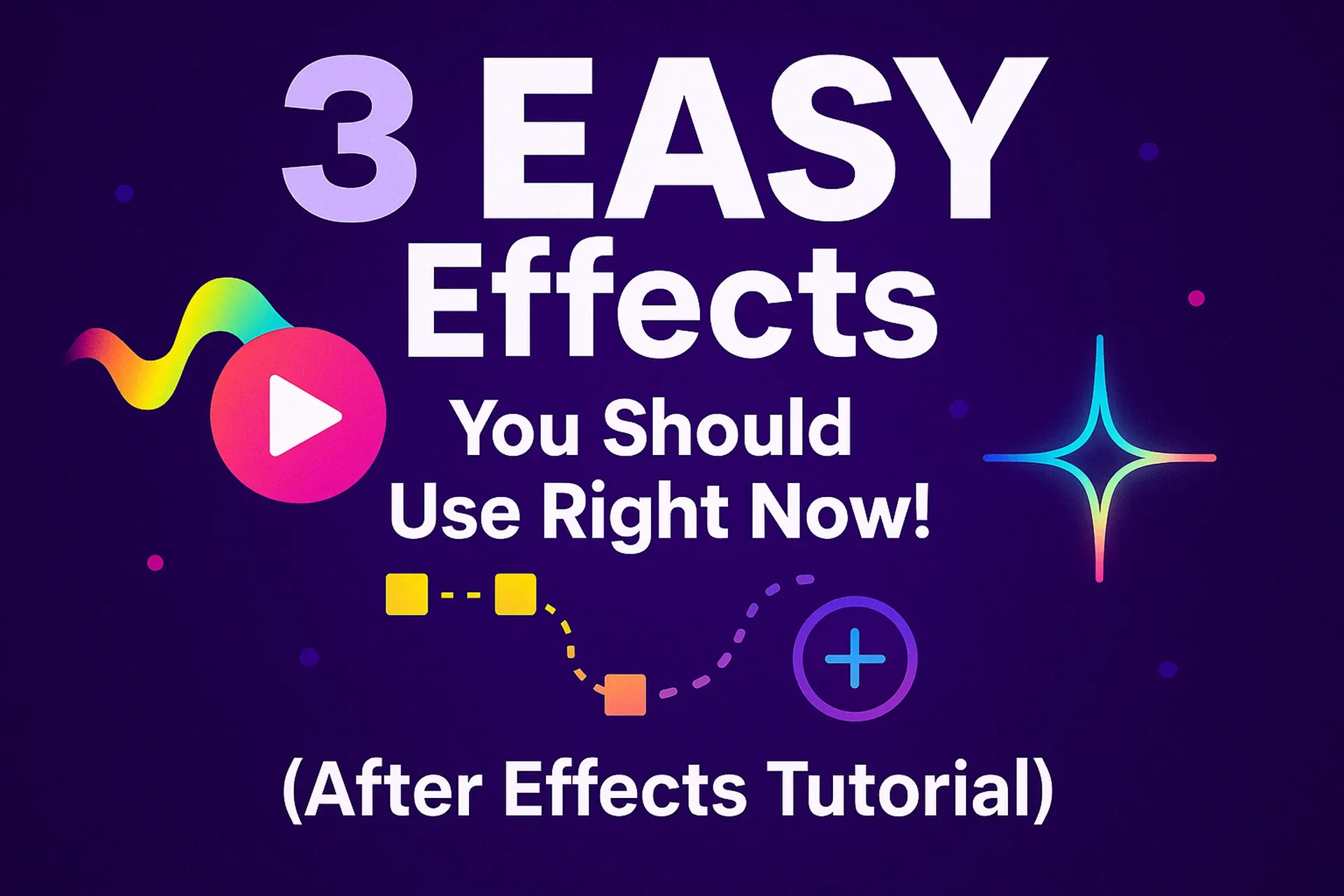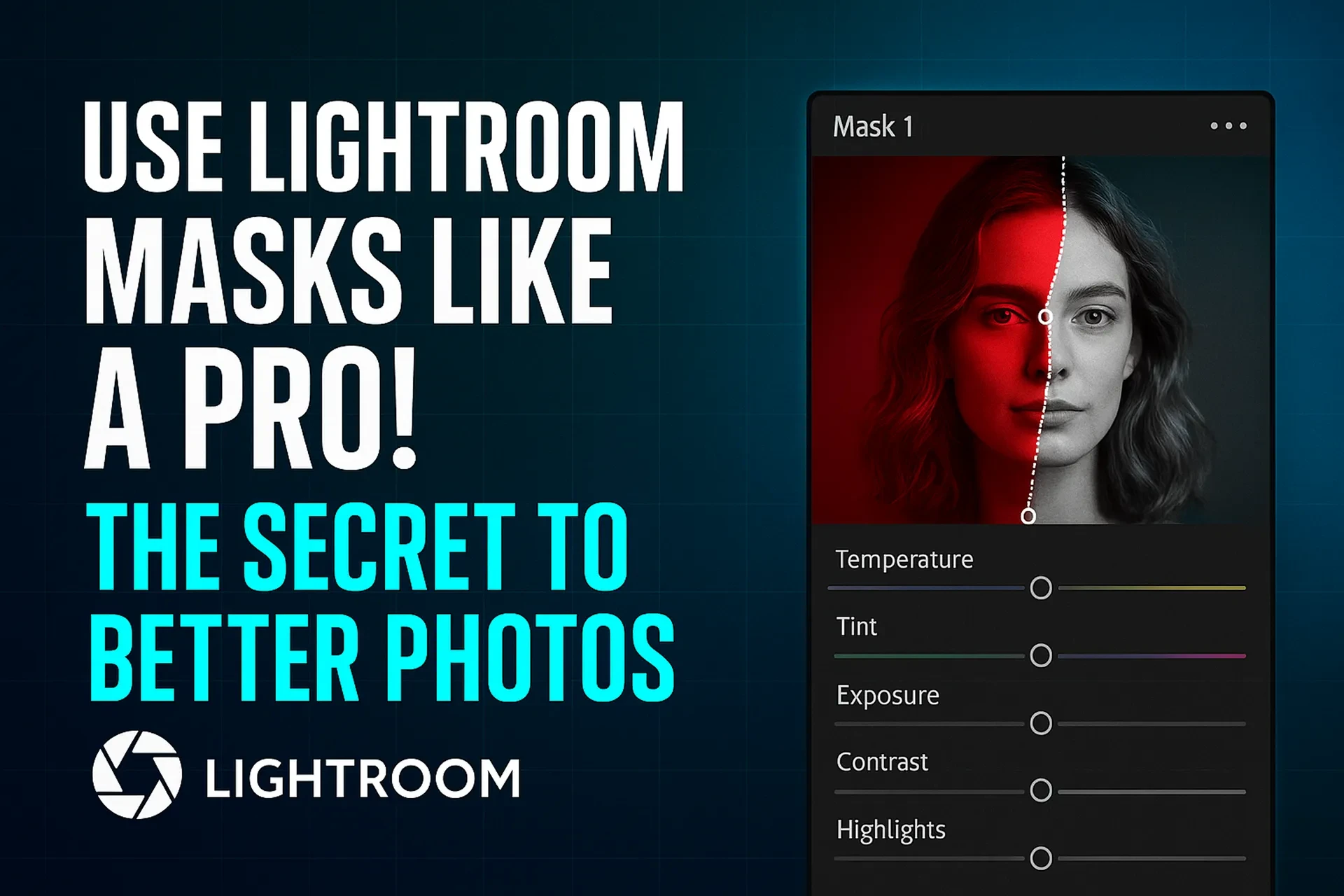Table of Contents
If you create short-form videos for Instagram, YouTube Shorts, or TikTok, you’ve seen the hand-drawn scribble reveals, buildings splitting into animated blocks, and athletes tearing through the frame with neon trails. These looks are fast to produce, highly shareable, and—once you know the workflow—surprisingly approachable in Adobe After Effects. In this tutorial, you’ll learn three production-ready techniques drawn from a single creator demo: a motion-tracked scribble that sticks to a face, a modular building “pull-apart then rebuild” animation, and a freeze-frame motion trail for sports and action. You’ll get step-by-step instructions, why each step matters, pitfalls to avoid, and pro tips to make your results look deliberate—not gimmicky.
What You’ll Build (Definitions & Context)
Before diving in, align on terminology so you can translate the on-screen actions into your own projects:
• Motion tracking: The process of analyzing a pixel pattern (e.g., a high-contrast detail like a nostril) so a “null” layer inherits that motion. Any child layer parented to the null follows the track, which makes graphics stick believably to moving footage.
• Null object: A control layer with no pixels. You parent other layers to it to pass along position/rotation/scale changes without baking them into each child.
• Wiggle expression: An expression that adds random variation over time: wiggle(frequency, amplitude). Used sparingly, it simulates hand-drawn jitter.
• Auto-Trace: Converts the alpha or luminance of a layer into animated masks that can drive the Scribble effect.
• Clean plate: A background frame with foreground objects removed (created in Photoshop with Generative Fill or by hand). It lets you reveal “insides” or behind-objects that never existed in camera.
• Rotoscoping: Isolating a subject from the background (Roto Brush or mask animation). Essential for clean freeze-frame clones and echo trails.
• Echo effect: Creates delayed copies of a layer’s frames. Combined with blur and color, it becomes a dynamic motion trail.
You can complete all three techniques with stock After Effects. Optional polish layers—Chromatic Aberration and Glow—can come from built-in or third-party tools.
Technique 1: Motion-Tracked Scribbles That Stick to a Face
This effect adds kinetic, hand-drawn flourishes that move with your subject’s features—perfect for punchy intros, music videos, and creator reels.
Step-by-Step
1) Create a composition and track the face
• Import your footage and make a new comp.
• Open Tracker (Window ▸ Tracker). Click Track Motion.
• Place the track point on a high-contrast detail—the tutorial uses a nose hole because it’s small, sharp, and remains visible frame-to-frame.
• Click Analyze Forward. You don’t need the entire clip—just enough for the scribble moments you plan to add.
2) Send the track to a null
• Layer ▸ New ▸ Null Object.
• In Tracker, set Edit Target to the null and click Apply.
• Scrub the timeline—your null should follow the facial feature.
3) Import and place your scribbles
• You can draw scribbles in Illustrator or download a pack; import the vector file.
• Drop the first scribble into the timeline. Keep it only a few frames long so it feels snappy.
• Position the scribble over the tracked feature and parent it to the null with the pick whip.
4) Add life with wiggle
• Reveal Position (P) and Scale (S) on the scribble. Alt/Option-click the stopwatch and add:
wiggle(50, 10).
• Interpretation: 50 samples/second, 10-unit amplitude. This creates a subtle jitter that sells the hand-drawn vibe.
5) Auto-Trace and Scribble effect
• With the scribble layer selected: Layer ▸ Auto-Trace. In the dialog, set Channel: Alpha.
• Apply Effect ▸ Generate ▸ Scribble.
• In Scribble, set Paths: All Masks and Fill Type: Inside Edges.
• Tune Stroke Width, Wiggle Type (e.g., Jumpy), Spacing, and Path Overlap for energetic variation. This instantly upgrades a static doodle into living ink.
6) Polish
• Add Chromatic Aberration (built-in VR Chromatic Aberration or Red Giant, per) and a gentle Glow.
• Duplicate and repeat with new scribbles at different beats to layer complexity.
Why it works: The brain is sensitive to edge shimmer and micro-instability; small wiggles plus animated strokes trigger “this is hand-made” cues while staying clean and legible.
Pros, Cons & Risk Management
• Pros: Quick to iterate; vector-based so it scales; stylistically flexible (cute, edgy, techy).
• Cons: Messy tracks cause sliding; over-wiggle looks noisy; too-thick strokes can obscure important facial features.
• Risks & Mitigation:
• Track drift • Re-track with a smaller feature box and enable sub-pixel precision; limit to shorter spans.
• Visual clutter • Use 6–12-frame bursts; vary stroke width; fade out with opacity keys.
• Color conflicts • Eyedropper sample from the scene palette; use complementary colors or set scribbles to white over darker grades.
Common Mistakes & Expert Tips
• Mistake: Parenting scribbles to the footage instead of the null. Fix by re-parenting—nulls are safer for global tweaks.
• Mistake: Forgetting Motion Blur toggles. Turn it on for the layer and in the timeline.
• Tip: Stack two Scribble effects with different Wiggle Type values (e.g., Smooth over Jumpy) for layered organic motion.
• Tip: Animate Stroke Width subtly (±1–2 px) across a few frames to mimic pressure variations.
Technique 2: Split-and-Rebuild a Building (Modular Architecture Animation)
Seen across design reels and architecture Instagrams, this look takes a static facade, slices it into chunks, reveals “interiors,” and animates the parts back into place.
Planning & Plate Prep
• Choose a building with obvious block divisions—windows, bays, cornices. Avoid camera movement for the first pass.
• Export the first frame to Photoshop. Use Generative Fill to remove the building, creating a clean plate. This will live under your parts to fill gaps convincingly.
Layering the Scene
1) Stack the background
• Import the clean plate; put it below everything.
2) Maintain real motion on the ground
• Duplicate the original shot. On the lower duplicate, mask the floor area so you preserve moving passersby or traffic.
3) Freeze and duplicate for parts
• On the top duplicate: Time ▸ Freeze Frame.
• Duplicate this frozen layer once per building section you want to animate.
• On each duplicate, mask a distinct block (a column of windows, cornice, signage).
Fabricating the “Insides”
• Behind each masked section, draw simple interior shapes with the Pen tool and apply radial gradients.
• Match perspective to the camera so the depth feels plausible.
• Pre-compose each pair (building part + interior fill) for clean animation control.
Animate the Reconstruction
• On each precomp, keyframe Position, Scale, and Rotation to fly parts outward, then return them to their origin as if assembling.
• Offset the start times by 2–4 frames for cascading rhythm.
• Add a global camera wiggle or gentle null-driven move to sell cinematic parallax.
Pros, Cons & Risk Management
• Pros: Production value from stills; works with stock photos; compelling for architecture, real estate, and city reels.
• Cons: Labor grows with the number of parts; mismatched gradients kill the illusion; perspective errors are noticeable.
• Risks & Mitigation:
• Gaps revealing nothing • Use the Photoshop clean plate as base filler.
• Edges popping • Feather masks 1–2 px; enable Continuously Rasterize for vector sources.
• Flat interiors • Stack two gradients (ambient + accent) and add a faint noise overlay for texture.
Common Mistakes & Expert Tips
• Mistake: Animating all pieces in sync. Stagger them for visual melody.
• Mistake: Over-scaling parts so they clip the frame. Check safe margins.
• Tip: Animate Shadows (simple duplicates with Fill + Fast Box Blur) beneath lifted pieces; parent to each precomp for contact realism.
• Tip: Render a depth matte by hand (grayscale solids) to drive Camera Lens Blur and create believable foreground/background separation.
Technique 3: Freeze-Frame Motion Trails for Action & Sports
This look multiplies your subject along their path with crisp freeze clones, then layers an echoing streak for speed—ideal for parkour, skating, cycling, or ball sports.
Step-by-Step
1) Pick a clip with decisive motion
• Big directional travel reads best. Slow motion or normal speed both work.
2) Rotoscope the subject
• Duplicate the shot; on the duplicate, Roto Brush the subject. If you’re new to rotoscoping, study edge refinement—hair and motion blur need extra care.
3) Create freeze clones
• Duplicate the rotoscoped layer multiple times.
• On each duplicate, move the playhead to a hero moment and Time ▸ Freeze Frame.
• Trim each clone so it only appears at its freeze instant.
• Order your stack: main moving roto on top, then clones underneath in chronological order. This preserves proper occlusion as the live subject passes.
4) Add the trail pass
• Duplicate the original shot (not the roto). Apply Effect ▸ Time ▸ Echo.
• Increase Echo Time, raise Number of Echoes, and reduce Decay slightly.
• Add Directional Blur to align with movement; extend Blur Length for streak quality.
• Optional style: Hue/Sat to recolor the echo, soft Glow, and Chromatic Aberration for prism edges.
Why it works: Freeze frames anchor attention on skill peaks while the echo pass communicates velocity and path—two complementary visual stories in one shot.
Pros, Cons & Risk Management
• Pros: High drama with minimal setup; viewer-friendly storytelling of motion path; easy color branding.
• Cons: Rotoscoping can be time-consuming; echo settings are sensitive; trails can overwhelm the subject.
• Risks & Mitigation:
• Roto chatter on edges • Add Refine Edge Matte and light grain; render intermediate passes if necessary.
• Over-echo • Cap echoes to 4–7, decay ~0.6–0.8; keep blur aligned with actual travel angle.
• Color clipping • Work in 32-bit when pushing glow and aberration; clamp with Lumetri or Levels.
Common Mistakes & Expert Tips
• Mistake: Freezing frames before confirming the final hero beats. Map key poses first; freeze after.
• Mistake: Letting clones float off the ground. Add drop shadows (solid ▸ multiply, blur, lower opacity) matched to scene light.
• Tip: Slightly scale down older clones (−1% per clone) for depth perspective.
• Tip: Add a light wrap on clones (additive blur sampled from background) to integrate edges.
Practical Mini Case Study: Creator Reel Sequence
Scenario: You’re editing a 20-second creator reel. You open with a face-tracked scribble reveal, transition to a quick architectural pull-apart of your city shot, and close with a skateboard motion trail.
Plan
• 0–6 s • Close-up greeting with scribbles punctuating words. Wiggle jitter syncs to beat markers.
• 6–13 s • Smash cut to a building split: pieces fly out, interiors glow, then slam back together on the bass drop.
• 13–20 s • Skate trail sequence: three freeze clones on ollie attempts, echo streak behind the main pass, brand colors in glow.
Why it works
• The three looks share a language—edges, outlines, and controlled jitter—so the reel feels cohesive, not eclectic.
• Each delivers a different storytelling beat: personality (scribbles), place (architecture), and performance (motion trail).
One-Page Settings Reference (At-A-Glance)
| Task | Setting | Starting Value (Tweak Per Shot) |
|---|---|---|
| Scribble wiggle | Expression | wiggle(50, 10) |
| Scribble paths | Paths / Fill | All Masks / Inside Edges |
| Building interiors | Gradient | Radial, 20–40% center brightness |
| Freeze clones | Order | Live roto on top, oldest clone at bottom |
| Echo trail | Echoes / Decay | 4–7 / 0.6–0.8 |
| Echo blur | Directional Blur | Angle matches travel; Length 20–60 |
| Global polish | Glow | Threshold low, Intensity 0.3–0.8 |
Treat these as baselines. Your footage may require different ranges.
Troubleshooting Guide
• Scribble slips off the face
• Re-track with a smaller search region; choose a feature that stays in view (nostril, eye corner).
• If the head rotates, switch to Perspective Corner Pin tracking or use Mocha AE for planar tracks.
• Auto-Trace produces messy masks
• Pre-blur the layer (Fast Box Blur 1–2 px) to simplify edges before tracing.
• Lower Tolerance in Auto-Trace; use Alpha channel for consistent fills.
• Building pieces look fake
• Add contact shadows, faint ambient occlusion (duplicate + Fill black + blur + multiply), and perspective-correct interiors.
• Nudge Z-position slightly (3D layers) and add a mild camera move for parallax.
• Motion trail smears the whole frame
• Apply Echo to a background duplicate, not to the roto subject.
• Mask or track-matte the echo so it doesn’t double over the hero face/body.
Workflow Speed Boosters
• Precomps as modules: For each building section, precomp early so you can reuse the rig across shots.
• Markers: Tap * on the numpad to mark beats; align scribble bursts and clone reveals to rhythm.
• Adjustment layers: Put glow/aberration on adjustments for global control and fewer re-renders.
• Color management: Move to 32-bpc when stacking glow + blur to avoid banding.
• Versioning: Save AE versions per technique (_scribble, _building, _trail) to experiment without fear.
FAQ's
Action-Oriented Conclusion
You now have three high-impact, low-overhead After Effects looks that scale across creator intros, music videos, reels, and brand promos. Start by practicing the face-tracked scribble on a 5-second clip to master tracking and wiggle nuance. Next, build a two-section architecture test to internalize clean plates and precomps. Finally, shoot a short action move and craft freeze-frame motion trails that communicate speed without chaos. Keep your layers modular, polish with light glow and chromatic edges, and, most importantly, pace reveals to the beat. The difference between “cool effect” and “cinematic moment” is timing—and you’re in full control.


























